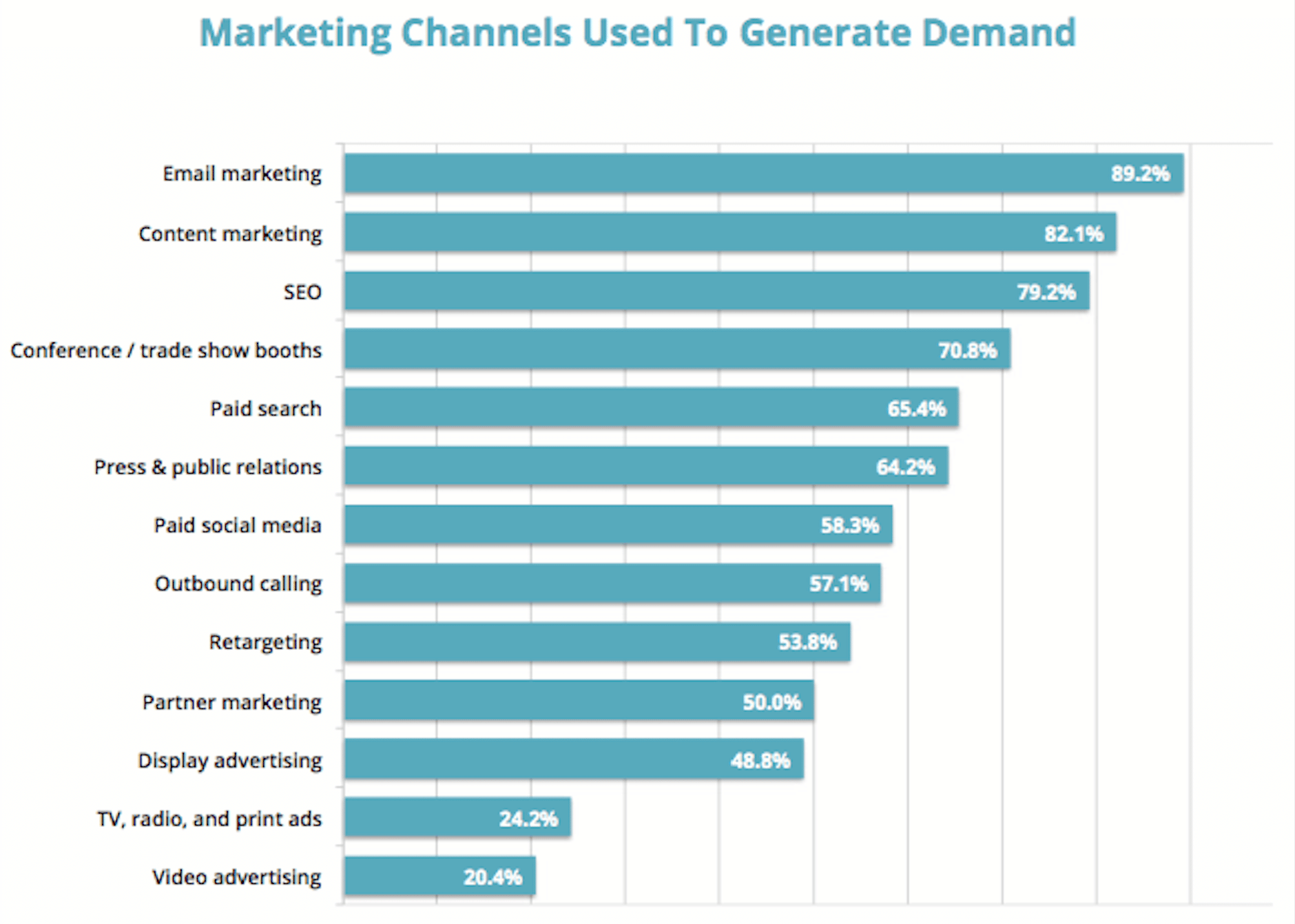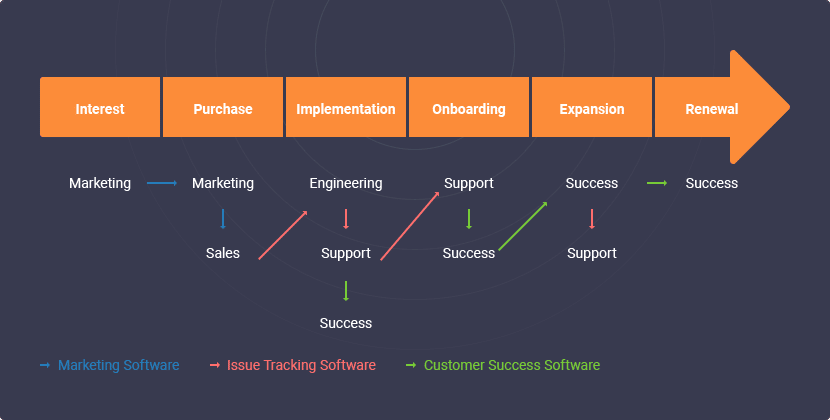Having a well-crafted marketing plan is essential for any SaaS business. But it’s not enough to just come up with goals; those goals must be precise, defined and measurable.
To give your plans some real direction, organize your objectives into categories such as customer acquisition, product development or financial well-being. Assign each goal a timeline, resources and a clear set of metrics that will help you measure success. Regularly review the progress of your goals and adjust according to changes in your SaaS market or industry. By doing this, you can make sure that you are always focused on the strategies needed for optimal success.
Here are four tips to help you avoid vague goals in your SaaS marketing plan and ensure that your strategy is effective and efficient.
Understand the Difference Between Objectives and Tactics
Objectives describe the desired outcome of a SaaS marketing goal, while tactics are the actual steps needed to reach them. It’s important to keep this distinction in mind when creating your plan so that you don’t get caught up in too much detail and lose sight of the larger goal.
Marketing is an essential part of any successful SaaS business, as it helps them not just reach a wider customer base, but also grow and evolve over time. However, creating a meaningful marketing plan that’s effective isn’t always straightforward, especially when it comes to distinguishing between objectives and tactics. Here are some tips on understanding the difference between the two so you can more effectively reach your desired outcomes.
Objectives
These are the overall goals of your marketing strategy – what do you want to achieve? Objectives should be measurable, such as increasing website traffic by 10% or boosting user engagement by 25%.
They should also be ambitious yet achievable and realistic; if they’re too easy then you won’t push yourself enough to strive for success. Objectives keep a large task in mind that maintains motivation across your team. However, marketing objectives do not need to be broad, in fact, they should be fairly specific in scope.
If your SaaS marketing goal is to increase brand awareness by a certain percentage, objectives that lie within that include elements such as boosting user engagement, social media attraction, website visibility, client outreach, and more. While the overarching goal is broad and unspecific, the marketing objectives should be measurable.
Tactics
Tactics are the specific methods used to reach those objectives. It could mean using PPC campaigns or targeting customers with personalized emails; whatever works best for your business.
Tactics should be tailored towards reaching their intended objective and goal, rather than being chosen randomly or simply because everyone else is doing them. It’s important to track progress regularly so you can make adjustments if necessary.

Examples of marketing tactics to generate demand include:
Content Marketing
An effective way to inform potential customers about your product, as well as build trust and loyalty among existing ones.
- Tactic : Publish long form blog posts 3x a week about the product or service “how to,” a trending topic about our SaaS industry, and Thought Leadership.
Search Engine Optimization (SEO)
SEO increases visibility of your website by improving its ranking on search engine result pages (SERPs).
- Tactic : Monitor keywords each week and ensure each blog post contains at least two of the most relevant and high ranking keywords.
Social Media Marketing
If its sponsored ads or organic posts, SaaS businesses can reach out to their target audience in real time while promoting their products/services.
- Tactic : Join one new online community each week on Reddit, Facebook, and LinkedIn and publish the content from that week in order to create lists of users who engage to target further.
Pay-Per-Click Advertising
PPC advertising lets you pay only when someone clicks on your ad; SaaS businesses can ensure that the right people are seeing their ad campaigns at all times.
- Tactic : AB test across two target/niche audiences to determine which types of audiences respond to particular ad campaigns.
Focus on Long-Term Results
Many marketers make the mistake of focusing too heavily on short-term gains, such as clicks or impressions from an ad campaign. While these metrics are useful for gauging success in the short term, it’s important to keep an eye on long-term results like brand awareness or customer loyalty so you know if your marketing efforts are paying off over time.
For any SaaS business, focusing on long-term results is essential for success. By looking beyond immediate metrics, SaaS businesses can begin to create a strong foundation of brand recognition and customer loyalty. As customers become more familiar with the brand and its offerings, they tend to be more likely to engage with conversion opportunities.
When strategizing for a B2B SaaS company, it’s important to create an expansive plan that includes elements such as brand recognition, customer loyalty and higher conversion rates – ultimately marketing can be essential for your business’ success. Part of the role of a marketing team is to create legitimate and reliable systems on which a SaaS company can rely.
Achieving long-term success often requires asking the right questions and staying focused on your overall goals.

Here are some tips to help you keep large marketing goals with long-term results in mind:
Set Short-Term Goals
Creating short-term goals will give marketing teams a sense of accomplishment when you reach them, and also allow you to measure progress over time. Make sure these goals are achievable, specific and measurable – so that it’s easy to track your progress.
Keep an Eye on the Big Picture
It’s important to take a step back and look at the big picture every now and then – this will help ensure that your goals remain aligned with your larger objectives. You should also consider doing periodic reviews of your overall strategy to make sure it’s still relevant and effective.
Focus on Outcomes Rather Than Outputs
As much as possible, focus on outcomes rather than outputs when making decisions about marketing campaigns or activities. Thinking about the end result can help ensure that the efforts are worthwhile and relevant to the goal at hand.
Collect Data & Measure Results
Having access to data is one of the most powerful tools of any marketer – allowing you to measure which strategies are working, track customer behavior, identify trends, etc. Taking advantage of analytics tools can be hugely beneficial for understanding how best to approach each individual campaign or activity to better comprehend and strategize long term goals.
Insivia Seminar Series: Avoiding Vague Goals in your Marketing Plan
Think and Strategize Holistically
When formulating your marketing plan it is easy to get lost in the details and end up with a scattered approach that lacks focus or direction. To avoid this, think holistically about all aspects of your strategy – content, SEO, social media, PPC etc. – and create an integrated program that works together towards achieving your goals.

Invest in Content Marketing
Content marketing is an effective way to reach potential customers and build trust with existing ones. Investing time and resources into creating quality educational content such as blog posts, webinars, podcasts, etc., can not only increase your website’s visibility but also generate leads and nurture relationships with customers.
Utilize Social Media Platforms
Social media has become one of the most powerful tools for SaaS companies when it comes to building brand awareness and engaging with customers. Platforms like Twitter and Instagram are great for sharing updates about new products or features, while LinkedIn is useful for directly reaching out to potential customers or affiliates who might be interested in what you offer.
Take Advantage of PPC Campaigns
Pay per click (PPC) campaigns have proven beneficial for many SaaS companies looking to reach their desired audience quickly and efficiently. PPC allows you to target specific keywords related to your product or service which can help drive more qualified visitors to your website – leading to higher conversions in the long run.
Develop an Email Strategy
Developing an email strategy is crucial if you want to keep customers updated on new developments or offerings, as well as create opportunities for engagement by providing valuable content that they can use in their day-to-day lives. Regular newsletters or targeted emails can do wonders when it comes to boosting customer retention, loyalty, and satisfaction over time!
Monitor Progress Regularly
Regularly reviewing and monitoring progress allows marketers to adjust their tactics if they are not meeting their desired results. This also makes it easier to identify any potential problems before they become too severe and costly to fix later down the line.
Data analysis for a SaaS company is a necessary element for effective marketing strategies. For SaaS companies looking to understand customer behavior, track their performance, measure results, and identify trends is crucial. By collecting and analyzing data, companies can gain valuable insights into what strategies are working and what areas need improvement – allowing them to optimize their marketing efforts in order to achieve the best possible outcomes.
While it may require some time and resources upfront, in the long run data analysis can be a powerful tool for developing more effective campaigns that generate real results.
It allows the marketer to identify which strategies are working and which are not. It also provides insight into consumer behavior, enabling companies to better understand their target audiences and tailor their offerings accordingly.
By analyzing customer data, marketers can identify potential problems and opportunities, and find ways to improve their products and services in relation to customer needs. In addition, data analysis can help quantify the success of marketing campaigns and provide key insights to guide future marketing strategies, ultimately helping to drive customer growth and improve customer retention and loyalty.
Written by: Tony Zayas, Chief Revenue Officer
In my role as Chief Revenue Officer at Insivia, I am at the forefront of driving transformation and results for SaaS and technology companies. I lead strategic marketing and business development initiatives, helping businesses overcome plateaus and achieve significant growth. My journey has led me to collaborate with leading businesses and apply my knowledge to revolutionize industries.
